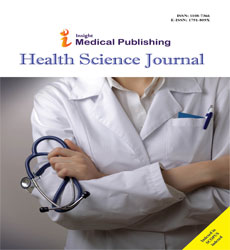Abstract
Leishmaniasis: A Review on Parasite, Vector and Reservoir Host
Leishmaniasis is a vector-borne disease affecting millions of people worldwide. The disease is caused by different species of Leishmania, and it is manifested by three major clinical forms namely cutaneous, muco-cutaneous and visceral leishmaniasis. This review is aimed to address briefly the parasite, the vector and the reservoir aspects in transmission of leishmaniasis in different regions of the world. The complexity of transmission of the disease lays on the complex life cycle of the parasite which involves sand fly vectors and mammalian reservoirs. The transmission can either be zoonotic and/or anthroponotic through the bite of an infected female sand fly. There is uneven global distribution of the disease often because of the various distribution patterns of the parasite, the vector and the reservoir host species. Various sand fly species in the genus Phlebotomus and Lutzomyia are responsible for transmission of leishmaniasis in the old and new worlds. Animal reservoirs are important for maintaining infections in various areas, and hence are important for zoonotic and rural/sylvatic transmission of the disease. A high prevalence of infection has been reported from small to large domestic and wild mammals. Control and elimination of leishmaniasis require detection of human and animal cases, identification of reservoir hosts, and implementation of effective vector control strategies in areas.
Author(s):
Bereket Alemayehu and Mihiretu Alemayehu
Abstract | Full-Text | PDF
Share this

Abstracted/Indexed in
- Google Scholar
- Genamics JournalSeek
- China National Knowledge Infrastructure (CNKI)
- CiteFactor
- CINAHL Complete
- Scimago
- Electronic Journals Library
- Directory of Research Journal Indexing (DRJI)
- EMCare
- WorldCat
- University Grants Commission
- Geneva Foundation for Medical Education and Research
- Secret Search Engine Labs
- Euro Pub
Open Access Journals
- Aquaculture & Veterinary Science
- Chemistry & Chemical Sciences
- Clinical Sciences
- Engineering
- General Science
- Genetics & Molecular Biology
- Health Care & Nursing
- Immunology & Microbiology
- Materials Science
- Mathematics & Physics
- Medical Sciences
- Neurology & Psychiatry
- Oncology & Cancer Science
- Pharmaceutical Sciences

